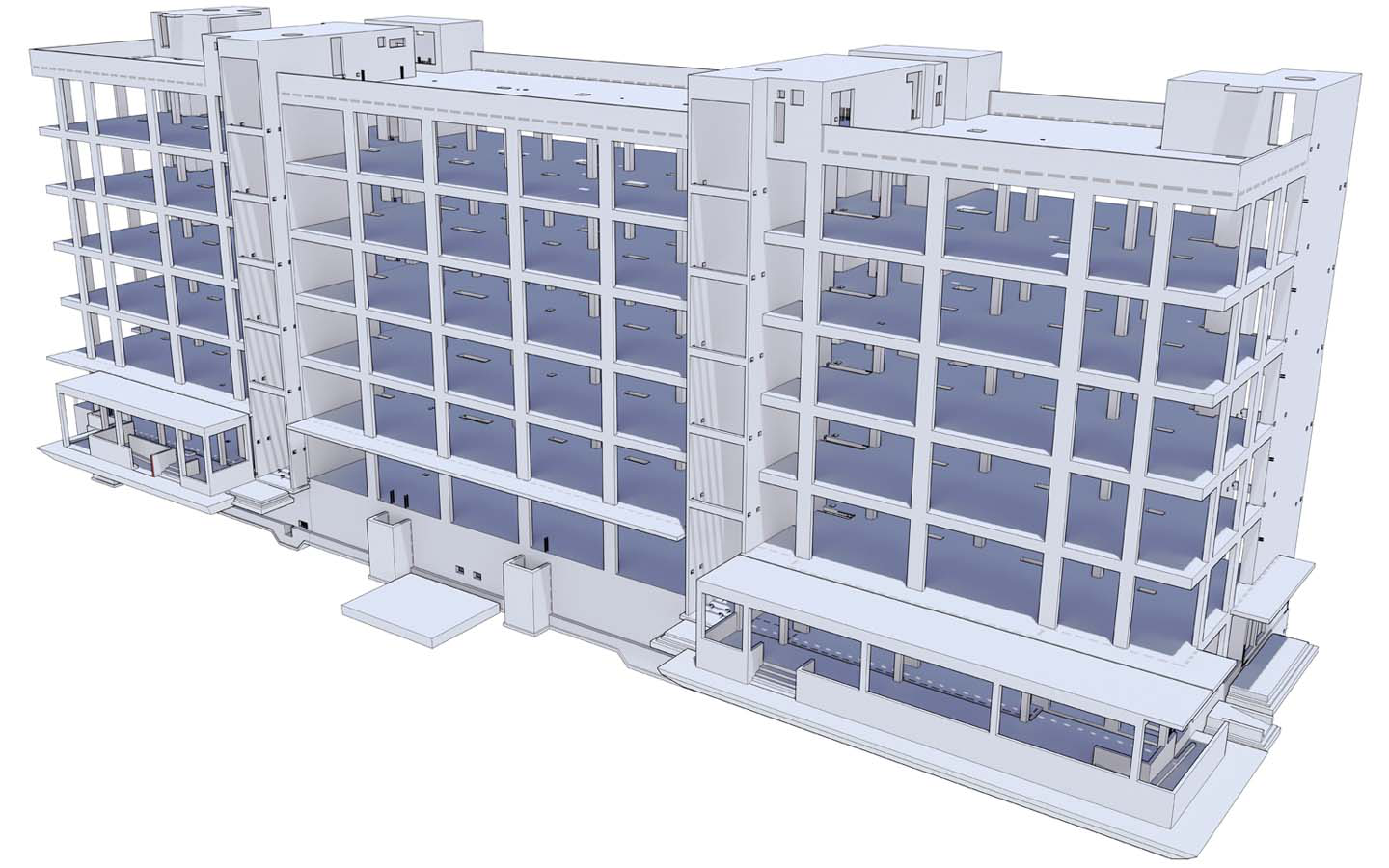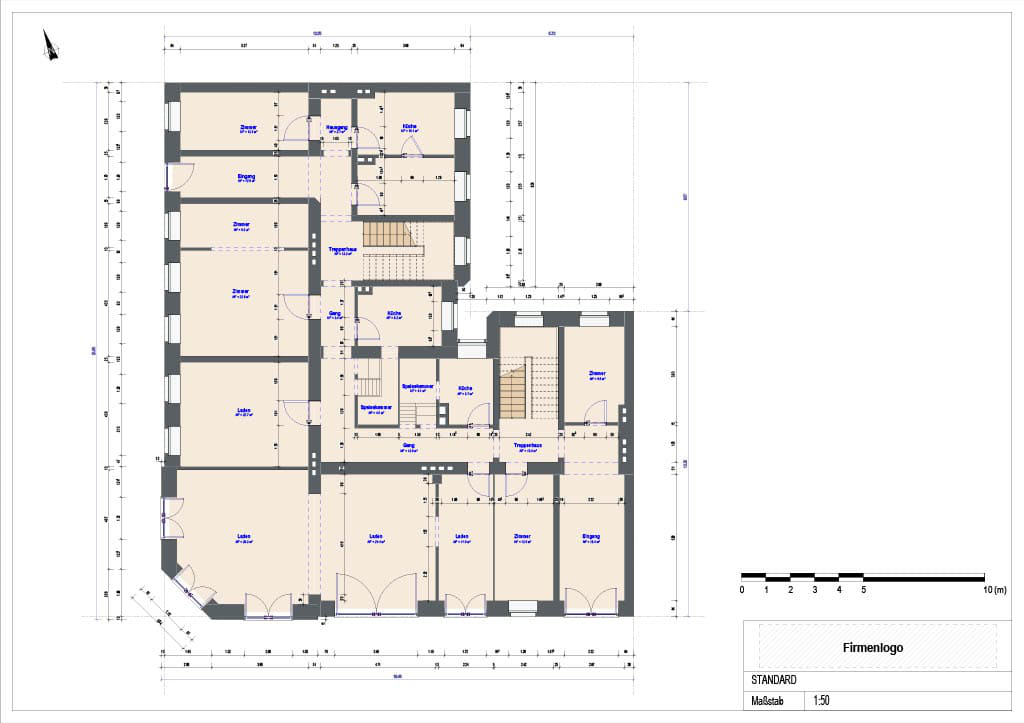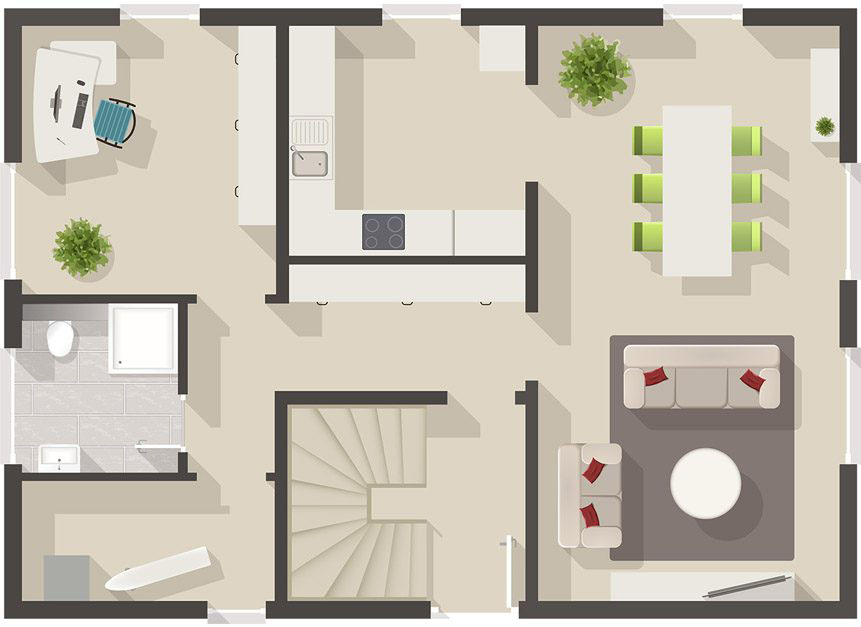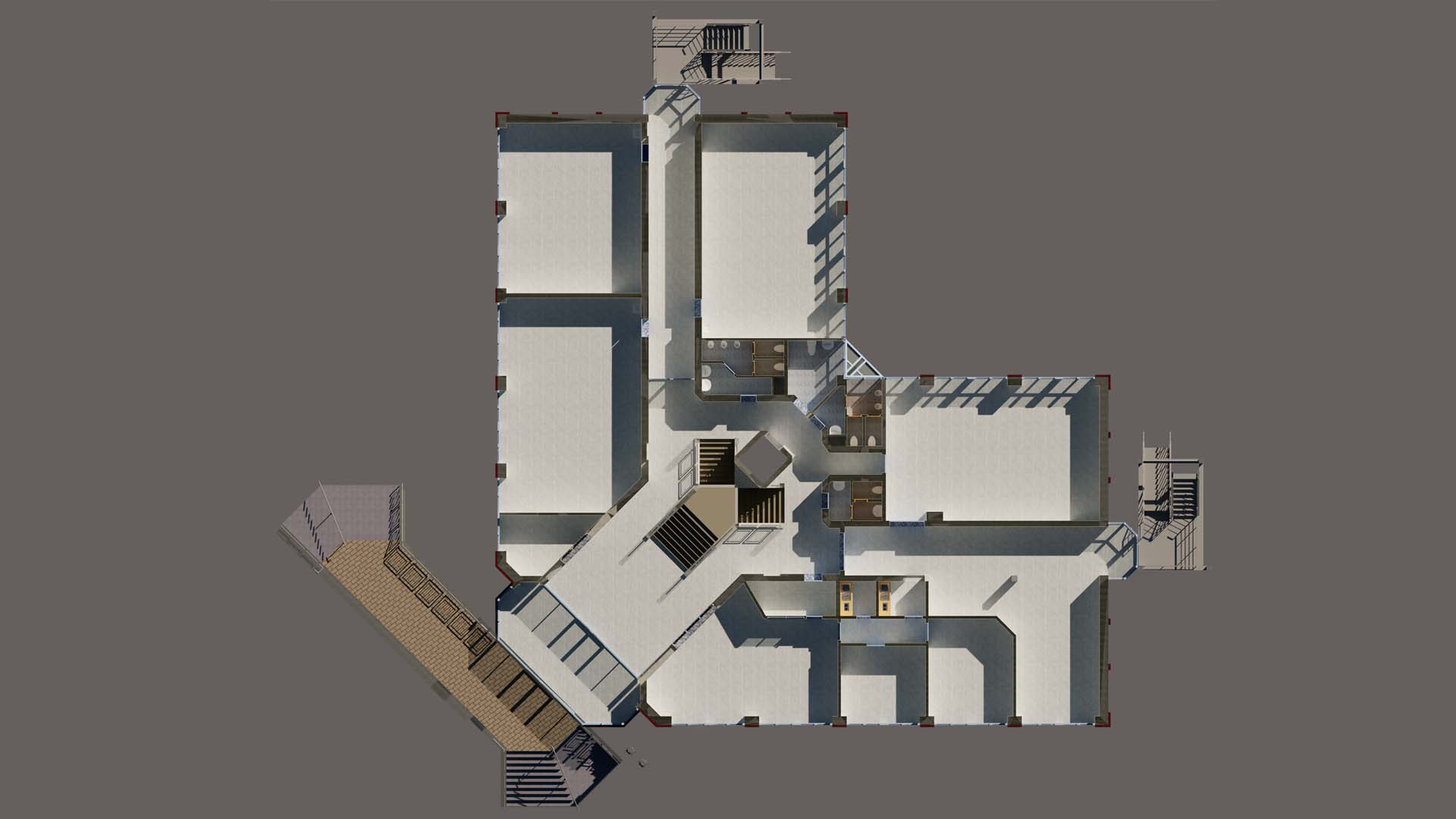In the construction and real estate industry, digital floor plans play a central role and form the basis for almost all project phases. From design planning to the marketing and redesign of existing properties, they are indispensable tools.
Architects, project developers, property developers and other players in the B2B environment depend on precise planning and efficient use of space. This enables an accurate calculation of construction costs and targeted marketing of real estate.
Digital floor plans can be edited quickly and forwarded easily. In addition, they can be seamlessly integrated into existing workflows – such as CAD systems, visualization tools or sales platforms.
In this guide, you will learn how to create a floor plan online and what you should pay attention to in a professional environment. In addition, we show the potential that digital floor plan creation opens up for your company. We will be happy to answer any questions you may have about the creation of floor plans. Contact us directly now.


What is a digital floor plan?
A digital floor plan is a computer-aided representation and visualization of a building. Depending on the application, it can be created either as a two-dimensional plan view (2D) or as a three-dimensional model (3D). In contrast to classic paper plans, digital floor plans are flexibly adaptable, can be quickly divided and can be integrated into common tools.
In the B2B sector, digital floor plans are now part of the standard of modern construction and real estate processes. They are used in design planning, inventory analysis as well as in the sales and marketing phases of real estate projects.
They also form a reliable and long-term planning basis in the context of digital as-built documentation – for example, for authorities, owners or facility managers.
Basically, a distinction is made between 2D and 3D representations for digital floor plans, depending on the objective and area of use.
Floor plans in practice – typical application examples
Especially in the B2B environment – for example with architects, project developers or real estate managers – there are numerous professional applications for this: from the precise planning basis to the inventory and effective marketing.
In the following, we present typical areas of application and purposes.
Making spatial effects tangible with 3D visualizations
3D visualizations enable a realistic representation of real estate – even before it has been built or entered. They create emotional closeness, facilitate decision-making processes and make complex plans understandable. In today's project communication, they are an indispensable tool for many companies in the construction and real estate sector.
Apartments: Planning and presentation in residential construction
For the residential real estate sector, 3D floor plans offer the possibility of vividly depicting room layouts, lighting conditions, furniture and materials. Potential buyers or tenants get an authentic impression of the property as early as the marketing phase – ideal for exposés or online portals. In addition, they serve as a visual supplement to the technical blueprint and help to make planned room concepts easier to understand – both for experts and laymen.
Commercial Real Estate: Conveying Flexibility and Function
3D representations also offer clear advantages in the commercial sector: office space, practices, showrooms or retail properties can be visualized in various usage scenarios. In this way, space use, equipment and spatial effect can be presented in a targeted manner – for example, to support lease negotiations or project marketing.
Plots & Project Developments: Making Visions Visible
Especially in project development, 3D visualizations are helpful in making potential projects on undeveloped land tangible. Buildings, outdoor facilities or infrastructure concepts that have not yet been realised can be displayed virtually and used for internal or external communication.
Digital sales documents: More than just floor plans
The combination of a 3D floor plan and virtual inspection – e.g. via a 360° tour – is increasingly becoming the standard in real estate marketing. Property developers, brokers and investors in particular benefit from the professional preparation and presentation.
What is the difference between 2D and 3D floor plans?
2D floor plan (top view):

- Bird's-eye view (floor area, walls, doors, windows)
- Basis for technical planning, building applications, permits
- Use in facility management and for space calculations
- Quick and cost-effective to create
- Ideal for internal work processes
3D floor plan (spatial representation):

- Realistic representation of room height, furniture and materials
- Supports emotional appeal when selling and renting
- Ideal for exposés, online portals and presentations
- Can be combined with (e.g. 360° tours)
- Helpful for spatial effect and decision-making
Digital floor plans enable companies to efficiently record building conditions, clearly present plans and give interested parties or partners a clear idea of the property – whether as a classic 2D plan or modern 3D visualization.
How does digital floor plan creation work?
Today, the creation of digital floor plans is carried out in standardized, efficient processes that enable high quality and fast implementation. Especially in the B2B sector – for example with construction companies, architectural firms, real estate developers or portfolio holders – clearly defined processes are crucial for a smooth project process.
Upload of source materials
To begin, upload your existing documents – such as hand sketches, as-built plans, PDF files, scanned construction drawings or escape plans. Depending on the provider, the upload takes place via a customer portal, by e-mail or via an online form. It is important that the documents are complete and easy to read in order to enable precise digital implementation.
Processing using CAD software
The next step is digital tracing and modelling by trained CAD specialists. Professional programs such as AutoCAD, Allplan or Revit are used. These software solutions enable a true-to-scale implementation with clear lines, standard-compliant symbolism and – depending on the desired – a 2D or 3D representation.
Output Formats
After the editing is complete, the finished floor plans are provided in the desired file formats. Common formats are:
- PDF (for sharing and viewing),
- DWG/DXF (for CAD further processing),
- JPG/PNG (for presentations and online use),
- RVT (Revit) for BIM projects.

Correction Loops & Quality Assurance
Before the final handover, the plans usually undergo quality control by engineers or architects.Requests for changes or minor adjustments are taken into account in correction loops to guarantee a perfect fit. The customer thus receives a professionally prepared result that can be used immediately.
Have your floor plan created online with Grundriss Digital – experience that makes the difference
The market for digital floor plans is growing rapidly – but not every provider keeps its promises. Grundriss Digital stands for reliable quality, technical precision and personal support. Our customers benefit from many years of experience and a team that not only thinks digitally, but also understands architecture.
Each floor plan is implemented individually – with a clear structure, clean lines and in common formats such as PDF, DWG or Revit. We create professional floor plans for residential, commercial and land buildings. These can be easily integrated into your planning or marketing.
From the first sketch to the finished CAD file, we accompany you with know-how and commitment. Many of our customers particularly appreciate transparent communication and fast implementation – even with more complex requirements. If you want to create a floor plan online, you've come to the right place.
Make a non-binding enquiry now and receive a digital offer. Click here to go directly to our contact form.